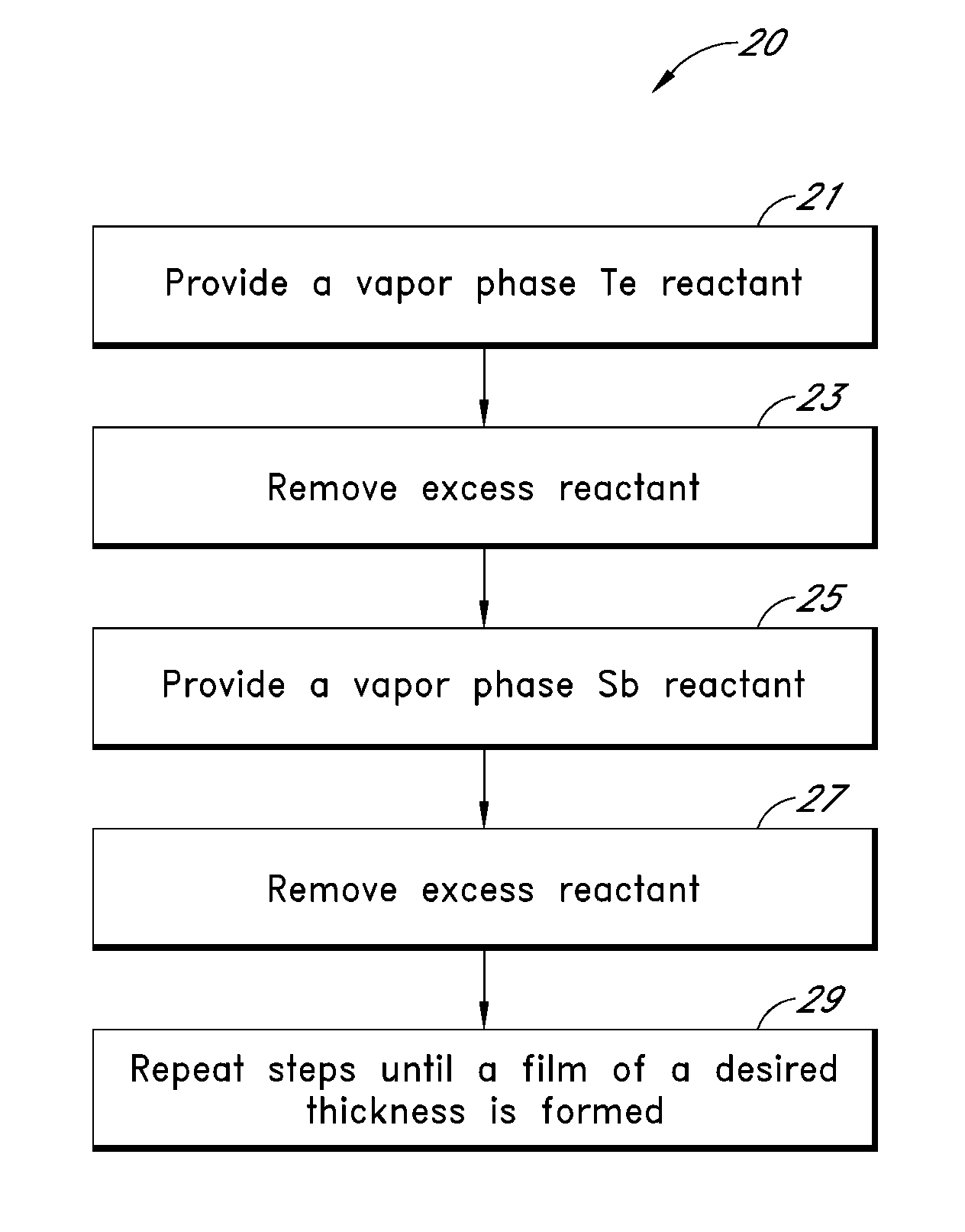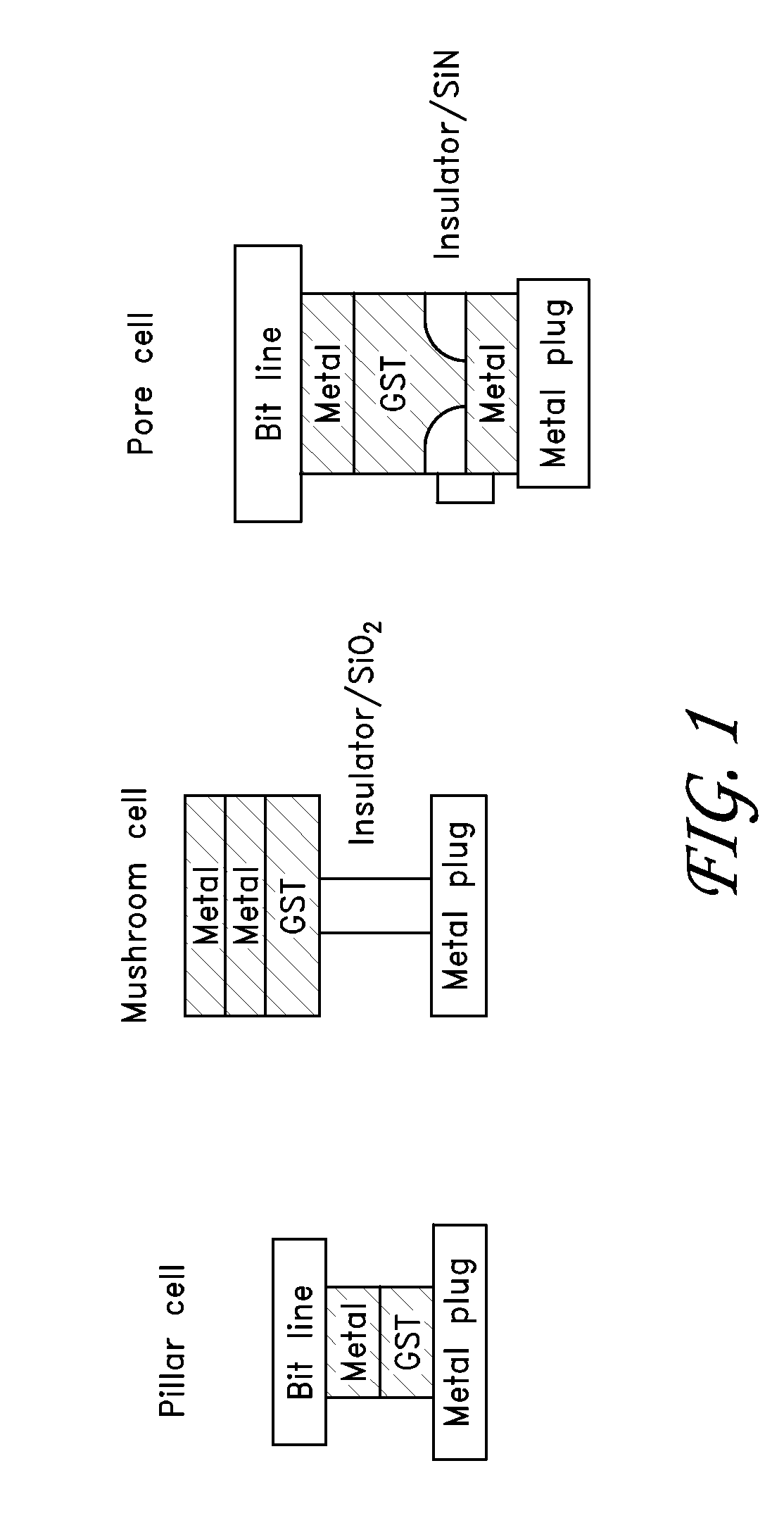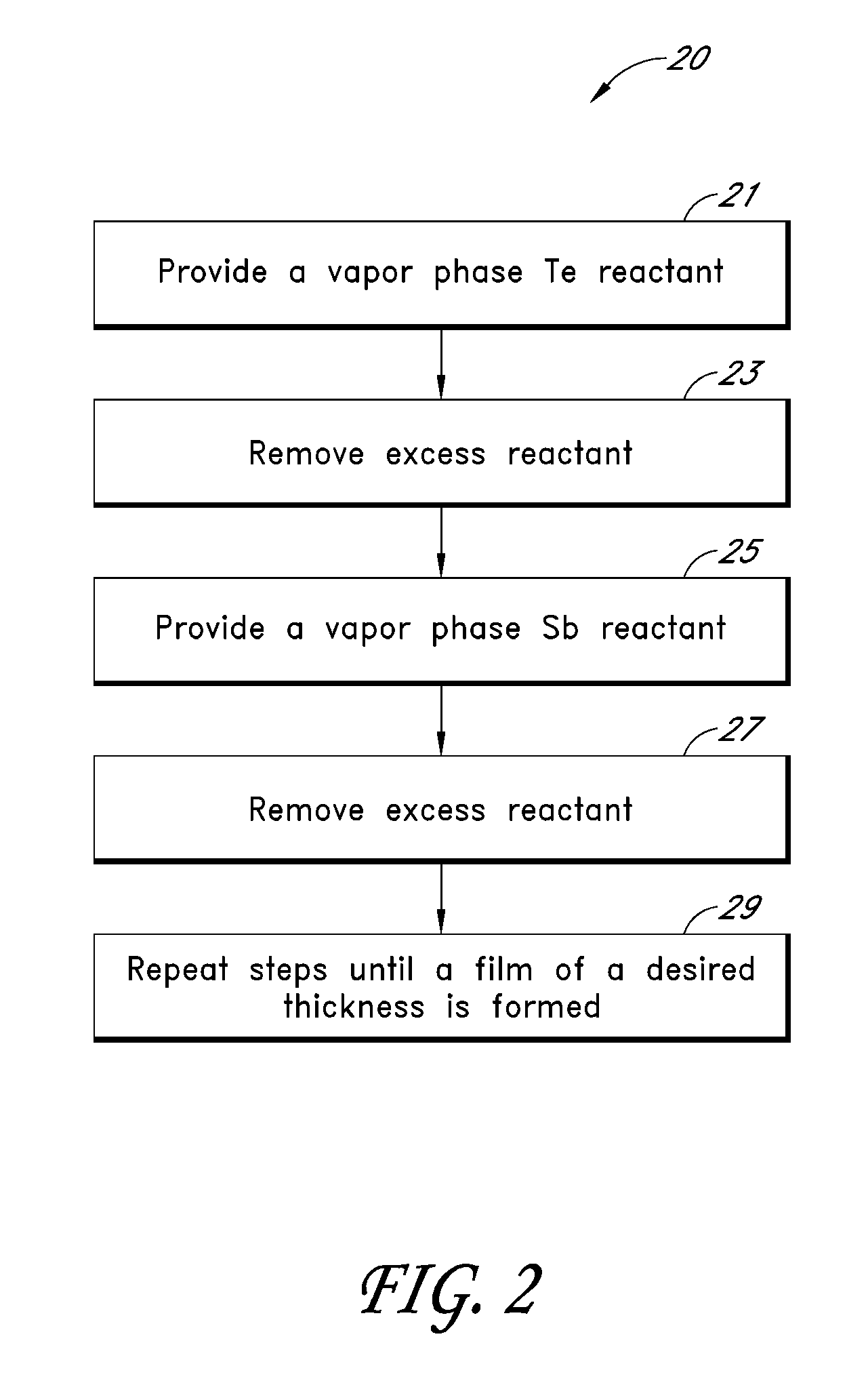Synthesis and Use of Precursors for ALD of Tellurium and Selenium Thin Films
a technology of tellurium and selenium, which is applied in the direction of organic compounds without c-metal linkages, organic chemistry, coatings, etc., can solve the problems of inability to form complex 3-d cell structures, limited atomic layer deposition processes for te and se-containing thin films, and lack of precursors
- Summary
- Abstract
- Description
- Claims
- Application Information
AI Technical Summary
Benefits of technology
Problems solved by technology
Method used
Image
Examples
example 1
[0104]Sb—Te thin films were formed using alternating and sequential pulses of SbCl3 and Te(SiMe2tBu)2. Pulse and purge lengths were 1 and 2 seconds for SbCl3 and 1 and 4 seconds for Te(SiMe2tBu)2. Sb—Te thin films were grown at approximately 100° C. on a silicon surface, soda lime glass, and rhodium. The Sb—Te thin films were deposited to a thickness between about 9 nm and about 12 nm.
[0105]The morphology of each film was compared using FESEM (field emission scanning electron microscope) images. In the FESEM images there were visible isolated islands on the film formed on the silicon substrate. However, the films grown on soda lime glass and rhodium were continuous.
example 2
[0106]Sb—Te films were deposited on silicon and on tungsten at approximately 150° C. using Te(SiEt3)2 as the Te source and SbCl3 as the Sb source. The SbCl3 pulse length was about 1 second and the purge length was about 2 seconds. The Te(SiEt3)2 pulse length was varied between about 0.2 seconds and 2.0 seconds while the purge length was about 2 seconds. The growth rate and composition were measured for the thin films formed with varying Te precursor pulse lengths. The results are illustrated in FIGS. 3-5, which also show error bars for each point estimating the uncertainty associated with the EDX measurement technique. As can be seen in FIG. 3, the growth rate per cycle ranged from about 0.019 to 0.025 Å / cycle on silicon with native oxide and from about 0.023 to 0.073 Å / cycle on tungsten depending on Te precursor pulse length. The exact composition of the films also varied with the pulse length of the Te precursor on silicon with native oxide (FIG. 4) and tungsten (FIG. 5).
[0107]FIG...
example 3
[0113]Sb—Te films were deposited on a substrate using Te(SiEt3)2 as the Te source and SbCl3 as the Sb source at varying temperatures and varying precursor pulse lengths. FIG. 19 is a graph of the composition of a Sb—Te thin film deposited on a tungsten substrate at varying growth temperatures. The Sb—Te thin films were deposited using 1 second pulses of Te(SiEt3)2 and SbCl3 reactants along with a 2 second purge between each reactant pulse. The deposited Sb—Te film was close to the stoichiometric ratio of Sb2Te3 for temperatures of about 100° C. and below. Additionally, no chlorine impurities were detected by EDX analysis. For higher temperatures, above about 120° C., the Sb—Te films contained slightly more antimony than the stoichiometric ratio of Sb2Te3.
[0114]FIG. 20 is a graph of the average growth rate per cycle of Sb—Te versus the growth temperature for Sb—Te deposited on a tungsten substrate and a silicon substrate. The Sb—Te thin films were deposited using 1 second pulses of T...
PUM
| Property | Measurement | Unit |
|---|---|---|
| deposition temperature | aaaaa | aaaaa |
| temperature | aaaaa | aaaaa |
| temperature | aaaaa | aaaaa |
Abstract
Description
Claims
Application Information
 Login to View More
Login to View More - R&D
- Intellectual Property
- Life Sciences
- Materials
- Tech Scout
- Unparalleled Data Quality
- Higher Quality Content
- 60% Fewer Hallucinations
Browse by: Latest US Patents, China's latest patents, Technical Efficacy Thesaurus, Application Domain, Technology Topic, Popular Technical Reports.
© 2025 PatSnap. All rights reserved.Legal|Privacy policy|Modern Slavery Act Transparency Statement|Sitemap|About US| Contact US: help@patsnap.com



